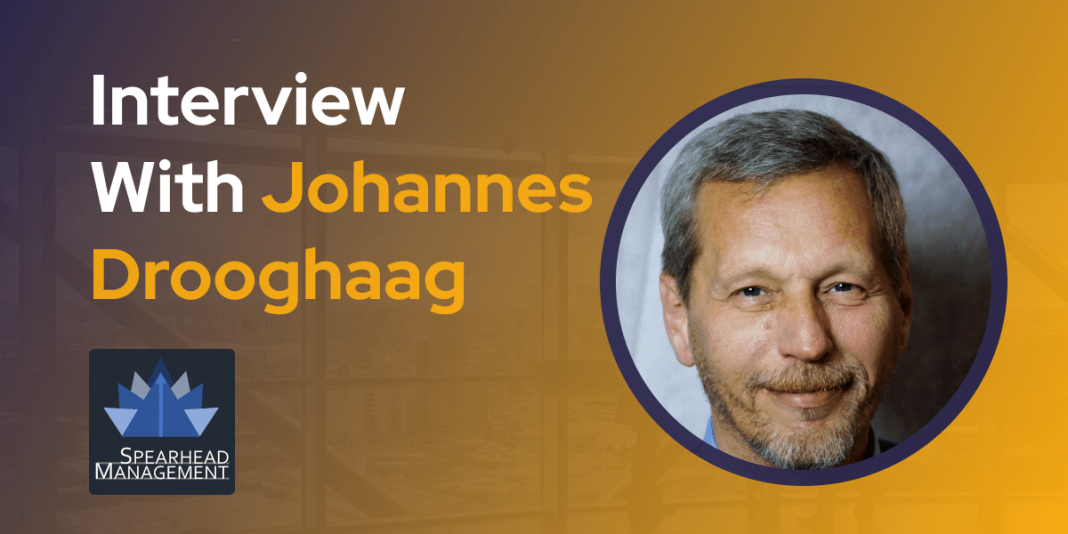Hi Johannes, tell us about yourself and your background and how you got to the digital transformation?
After promoting in Applied Information Technology, the mother of Digital Transformation, and leading a fast-growing software company, it was clear to me that technology evolves significantly faster than we enable people to do. Since then, I focus on the Human Potential in Digital Transformation and enable people and organizations to become Human Centric, technology leaders.
Online commerce was booming in 2020; how did it affect brands’ D2C strategy? – What should be the main focus for brands this year?
Netflix is one of those examples which created a fantastic D2C experience but also a partner network for reselling their services, for example through internet providers as a premium bundle. By doing so, they have been able to create a win-win-win for themselves, their partners, and their customers. I believe that this hybrid model will be a true success enabler. But first and foremost: Customer Service!
Johannes’ checklist for CX strategy
In your POV – What is the ultimate checklist for a good Customer Experience strategy?
As an advocate for inclusion and accessibility, my motto is “Do not ask the seeing how the blind experience your products”, so from that perspective my checklist includes questions like:
- Can someone who is visually impaired still enjoy your products when all the fancy visual design aspects are not available?
- How does someone with hearing issues experience your products and services?
Unfortunately, I experience that we tend to focus on the “optimal customer base”, which in most cases means the highest potential revenue with the lowest possible effort to create features and upselling opportunities. This means that a potential customer base of 2 billion people with special needs is already excluded from strategies and designs.
How much has the role of the CEOs in the social distancing era – what role digital transformation has in this crisis?
I see the primary responsibility of every CEO in enabling people to grow and perform, which requires a lot of interaction, asking questions, and listening to answers. Although we can do that all virtually, every leader must invest more in “the personal touch” without the in-person experience. The role itself did not really change, the means to do so did. It can be little things, like a personal message, or an after-work virtual happy hour, or giving someone on your team a call after an important and asking how it went. Better yet, a call days before that important meeting and ask if there is anything you can do to help.
What was the biggest lesson you learned in 2020?
“Yes, we can!” is what I take out of 2020. Supply Chains collapsed, companies came to a full stop, schools were closed for months in a row. And yet, we somehow managed and kept the lights on. Of course, we could have done better and of course, we could have been better prepared, but we made the best of it. So, yes, we can! Resilience is key!
2020 was the year of webinars and online events, what was your favorite one?
My own to be honest. In 2018 I decided to transform my workshops, keynotes, and training into online events to reduce the amount of travel time. Imagine flying somewhere, spending the night in a hotel, and fly back the next day just to deliver 2 hours of training or a 30-minute keynote. There was a lot of resistance at first since most companies and organizations prefer the in-person experience. And now, here we are. Every event is virtual and delivering a keynote by video conference has become the new normal. I am very happy about the acceptance of virtual presence and I hope that will continue to be accepted in the future.
It looks like working from home is going to stay with us for the foreseeable future, how should CEOs gear up to the changing times?
The presence and activity of people are less visible (and should never be of importance in the first place) so CEOs need to focus on input, output, and progress. The same applies of course to customers and suppliers. We will spend significantly less time in the same room, and we will lose the value and impact of common surroundings. Besides focusing on the personal touch, CEOs need to continue to focus on slicing processes into the smallest possible and interchangeable steps to enable organizations to respond to changes. Small-Group Activities and that startup mentality that you do not know what will happen, but you do know it will change everything are key to grow in challenging times. Digital Transformation and true Customer Centric strategies will decide about winning and losing, every step of the way.
Last but not least, what is your favorite CX metric?
Sales-After-Issue is by far my favorite metric. It expresses whether you were able to turn a dissatisfied customer into a satisfied customer. That can be the obvious path through customer service and support, but also the less obvious path through product releases or an abandoned trial version later converted into a paid subscription. Either way, this measures if something YOU did convince the customer to change their emotional perception of your products and services. When you are able to convince dissatisfied customers, you are able to convince everyone!
Dr. ir Johannes (JD) Drooghaag is the CEO of Spearhead Management






